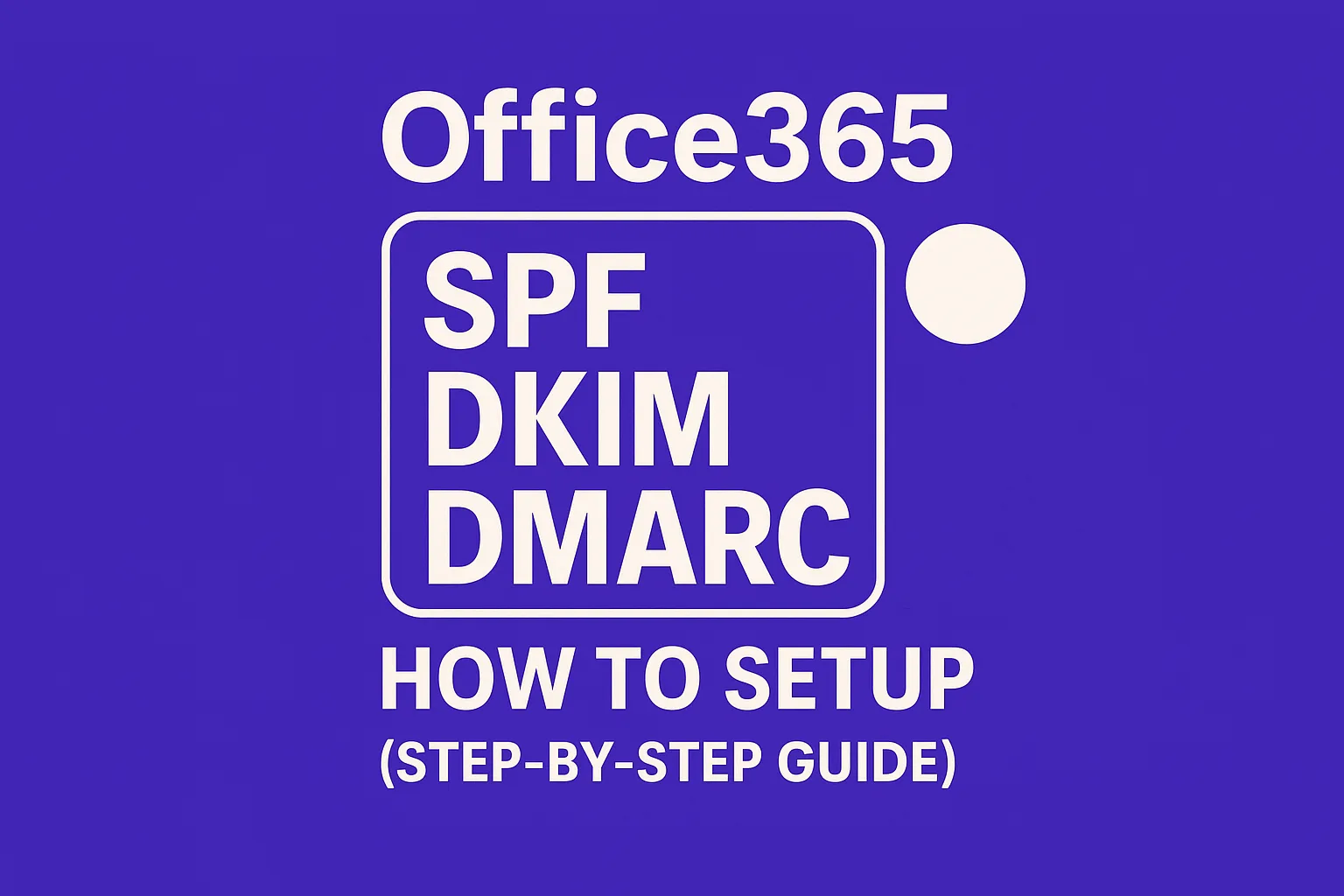Emails arrive in Gmail’s inbox but end up in Outlook’s Junk folder, Why?
If you’ve experienced this, you’re definitely not alone. I hear from people almost every week with the same concern: a message is accepted and lands in one inbox, while another mailbox routes it to the Junk folder. It feels arbitrary, but there’s a real explanation. Spam filters evaluate a mix of technical signals and recipient behavior. Small gaps in authentication, domain history, link patterns, or engagement can tip placement outcomes.
If one mailbox trusts my emails, shouldn’t the others as well?I wish things were that straightforward.
Let’s break down why this happens and outline the practical steps you can take to fix it. I’ll also explain the importance of warming up your domain, including when targeting Microsoft 365/Outlook recipients.
How spam filters evaluate emails
Spam filtering systems analyze several factors such as sender reputation, message content, and user interactions. Key influences include:
- Engagement signals matter. Actions like replying, archiving, flagging as spam, or rescuing messages from spam all significantly shape your reputation.
- Policy controls and risk analysis. Many enterprise filters assign each message a spam confidence level (SCL). The higher the score, the more likely your mail will end up in the Junk folder.
- Tenant policies vary. Every Microsoft 365 organization can create its own rules, custom blocklists, and transport filters, which complicates universal deliverability.
The upshot? You might appear trustworthy and pass standard checks yet still be treated as higher risk in some mailboxes, especially when sending from a newer domain or a shared IP address.
Common triggers that send emails to Junk
Certain issues frequently cause your mail to be flagged as Junk, even if it appears to land elsewhere:
- Weak or inconsistent authentication. SPF might validate for some paths but fail softly or remain neutral when alignment is off, which affects delivery.
- Alignment gaps. When the visible From domain doesn’t match the DKIM
d=domain or the domain used in SPF checks, filters treat the message as higher risk. - New or little-used domains. With limited sending history, filters typically assume a higher degree of risk, no matter how clean your content may be.
- Shared sending IPs with noise. If your IP is associated with multiple senders, the negative actions of others can impact your reputation.
- Reverse DNS or HELO mismatches. If your reverse DNS (rDNS) records don’t match your account’s sending hostname, your spam score can increase.
- Missing one-click list-unsubscribe headers. Not including this header for bulk-style mail increases your risk profile.
- Risky link patterns. Using URL shorteners, including links from various domains, or employing unbranded tracking URLs can trigger spam flags.
- Attachment types. Certain file types, especially large or potentially unsafe attachments, are more likely to result in Junk filtering.
Need a more detailed checklist for Microsoft environments? Check out this article on why Outlook sends emails to spam and how to fix it.
Authentication and alignment: Still the most important basics
Before you move on to anything else, ensure that SPF, DKIM, and DMARC are set up correctly and that alignment is in place. Its not just about passing these checks, it’s about passing with the right alignment.
Quick alignment reminders
- SPF: Your Return-Path or bounce domain should be your own and align with your From address.
- DKIM: Use a signing domain that is the same or a subdomain of your From address.
- DMARC: Begin with a
p=nonepolicy to collect reports, then switch to a stricter policy when you’re confident your setup is stable.
If you’d like a straightforward explanation, read this guide on SPF, DKIM, and DMARC explained in simple terms. It covers alignment without unnecessary jargon.
Reputation is earned through consistent, positive behavior
Think of sender reputation like a credit score built from many signals: how recipients interact with your messages, complaint rates, bounces, and the soundness of your technical setup.
This is where warming up your domain becomes invaluable. You need consistent, positive activity over time. The clearest signal? Real engagement: opened emails, replies, and messages that users rescue from spam folders.
Mailwarm is a tool that builds this foundation for you. It links your mailbox to a network of over a thousand active mailboxes, then sends low-risk, technically sound emails solely for the sake of reputation building. The network’s mailboxes open, reply to, remove from spam, and even tag your emails as Primary where appropriate. These real, automated interactions signal trustworthiness to modern filtering systems.
As your sending reputation improves, you’ll see lower spam scores and more emails landing in the inbox. Warm-up often yields noticeable improvements in stricter, enterprise-focused environments.
Key Microsoft actions to escape Junk
Combine these practical steps with a solid warm-up routine for maximum improvement with Microsoft:
- Sign up for Microsoft SNDS and JMRP. Monitor complaints and reputation data tied to your sending IPs for early warnings.
- Correct your rDNS and HELO/EHLO configurations. Make sure they match your sending hostname and use a consistent, valid HELO value.
- Deploy a dedicated subdomain. Use an address like mail.yourbrand.com for outreach and lifecycle messaging.
- Implement one-click list-unsubscribe headers. Provide recipients with a simple, safe way to opt out.
- Avoid URL shorteners. Transition to a branded, HTTPS-secured tracking domain instead.
- Warm up gradually. Slowly ramp up your sending volume with Microsoft recipients, no sudden spikes.
- Check blocklists. If your IP or domain appears, resolve these listings before increasing your output.
- Separate infrastructure where necessary. Keep cold outreach and critical transactional mail on distinct domains and IPs.
A practical recovery roadmap to follow this week
Day 1–2: Secure your technical foundations
- Double-check SPF, DKIM, and DMARC, ensuring they align properly. Begin logging DMARC reports.
- Review your rDNS, HELO, and TLS settings. Resolve any mismatches immediately.
- Eliminate use of URL shorteners and adopt a single branded domain for links.
Day 3–7: Begin warm up and lower risk
- Begin warming up with Mailwarm, sending only in low and steady volumes.
- Activate one-click list-unsubscribe headers for your bulk sends.
- If you conduct cold outreach, isolate it to its own subdomain and IP address.
Week 2 and onward: Build and maintain trust
- Increase your daily email volume slowly, avoid abrupt upticks.
- Keep an eye on Microsoft SNDS/JMRP and DMARC reports for any early signs of trouble.
- Continue steady engagement with ongoing warm up.
If you’re still finding Outlook places emails in Junk, refer back to the more comprehensive Microsoft-specific guide for troubleshooting more complex scenarios.
Why warm up is even more critical in 2025
Mailbox providers are ever quicker in flagging patterns they deem risky. Sending from new domains, new IPs, or having irregular sending frequencies is enough to raise red flags. Warm up provides the consistent sender history that email filters require to build trust in your messages.
With Mailwarm, this process is automated. Your mailbox engages with a real, managed network, ensuring emails are opened, replied to, or rescued from spam folders as appropriate. This genuine-looking activity is, in fact, authentic, and steadily builds your sending reputation through positive engagement.
Deliverability vs. delivery: What’s the difference?
One last crucial point: Receiving a server response of “250 OK” just means your email was delivered successfully to the server. However, whether it arrives in your recipient’s inbox or gets diverted to the spam folder is a separate issue, called deliverability. The two are not the same, understanding the difference is vital for fixing real-world email problems. For more on this distinction, read this overview comparing deliverability and delivery.
Wrap-up
Spam filters score and classify messages using many signals, which is why the same message can end up in different places. If your emails keep getting Junked, focus on fixing authentication alignment, using best-practice infrastructure, and building a steady history of positive engagement. Warm up plays an essential role here, especially with new or rarely used domains.
If you’d like an expert review of your setup, reach out to experienced deliverability consultants for feedback. Sometimes, a short review can save you weeks of troubleshooting. You can contact mailadept for tailored help.
FAQ
Why does one mailbox trust my emails while another flags them?
Some filters apply stricter policy- and risk-based checks. Even if a message is accepted elsewhere, gaps in authentication, poor engagement, or domain history can still cause a Junk outcome.
Why is domain warming up necessary for email deliverability?
Domain warming up builds a consistent sending reputation over time, crucial for gaining trust from email providers. Without it, youre risking your emails getting lost in the spam maze due to suspicious spikes in sending activity.
Does SPF, DKIM, and DMARC alignment really make a difference?
Absolutely, having strong alignment between SPF, DKIM, and DMARC ensures email authenticity and reduces the risk of being flagged as spam. It’s a non-negotiable step if youre serious about avoiding the junk folder.
Can engagement in one mailbox alone fix inbox placement everywhere?
No, engagement helps but it isn’t the only factor. Filters also weigh authentication, complaint rates, list hygiene, and sending consistency. Build strong, positive signals across your audience.
What should I avoid to prevent emails from landing in the Junk folder?
Avoid risky practices like using URL shorteners, sending from new domains without warm-up, and having inconsistent authentication settings. Ignoring these can quickly spell disaster for your deliverability.
Is it necessary to separate my email infrastructure for different types of emails?
Yes, using distinct domains and IPs for cold emails versus transactional ones helps safeguard your reputation. Mixing them increases the likelihood of all your emails being marked as spam due to different engagement levels and risk factors.
Can I restore a damaged domain reputation or do I need a new domain?
In many cases, reputational damage can be reversed through systematic warm-up and meticulous sending practices. However, if the domain is heavily blacklisted, starting with a fresh subdomain might be necessary.








